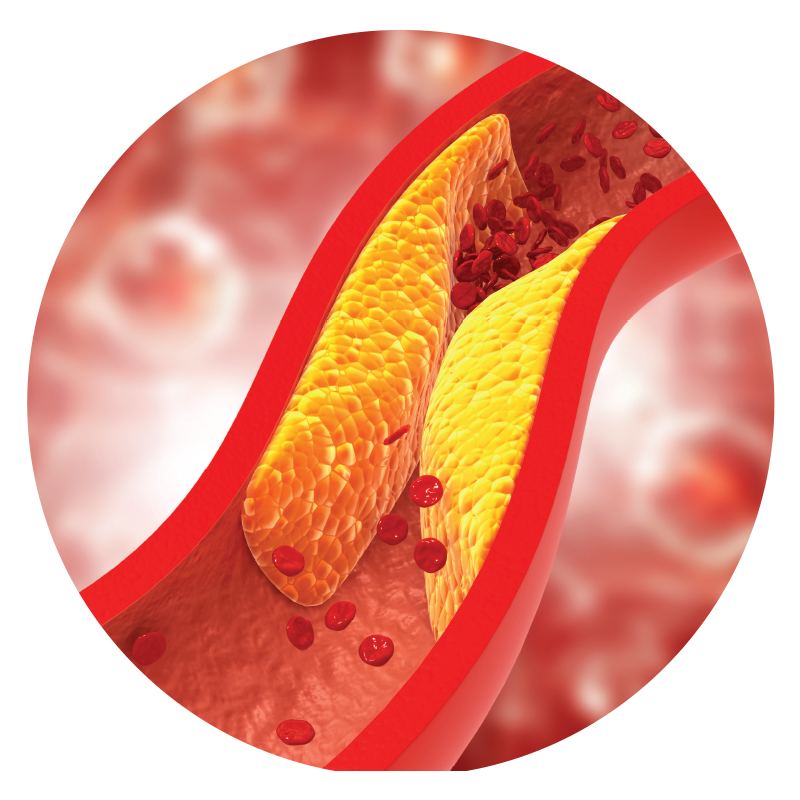Patient Profiles
We spoke with people who have different Lp(a) levels to learn more about their path to diagnosis and how they currently manage their Lp(a).




Henry Ginsberg, MD
Dr. Ginsberg is a professor of Medicine at Columbia University, past Director of the Irving Institute for Clinical Translational Research and a senior investigator of cardiovascular disease and lipoprotein metabolism research. Dr. Ginsberg is also a member of Silence Therapeutics’ Scientific Advisory Board. As a person with high Lp(a), Dr. Ginsberg was not compensated for sharing his own personal profile.
Personal/Family History
In his late 40s, Dr. Ginsberg discovered that he had a slightly high coronary calcium score, a test that looks for calcium deposits in the heart’s major arteries, which signifies the presence of coronary artery plaques. Dr. Ginsberg’s blood lipid levels, including LDL cholesterol had always been in the normal range and he had no other personal risk factors for cardiovascular disease.
There was, however, a history of early coronary heart disease on his mother’s side and stroke and aortic stenosis on his father’s side.


Path to Diagnosis
Based on the presence of an abnormal coronary calcium test, family history and his knowledge of the topic based on his professional activities, he was tested for elevated lipoprotein(a), or Lp(a), a genetic risk factor for heart disease.
Dr. Ginsberg checked his Lp(a) level through a simple blood test and the result was 200 nmol/L, which is considered extremely high.


Managing Lp(a)
While currently there are no treatment options available to specifically address the underlying cause of high Lp(a), Lp(a) should be considered a causal factor for cardiovascular disease. It is critical, therefore, to aggressively treat other risk factors with approved medications such as statins to lower LDL cholesterol to below “normal” levels and to live a healthy lifestyle with modified diet and exercise.




Falilat Boyd
Falilat Boyd is a Lead Coach in a public school system. As a person with high Lp(a), she was not compensated for sharing her personal profile.
Personal/Family History
As a child and young adult, Falilat was very active running track and cross country through high school. She occasionally would experience chest pains, but was left undiagnosed at the time as they were short lived.
Falilat is unaware of her broader family history related to cardiovascular disease.


Path to Diagnosis
At the age of 42, in seemingly good health, Falilat had a heart attack a week after the delivery of her twin boys. After getting the news of her heart attack in the emergency room, the next morning she had an angioplasty where three stents were placed in two major arteries. As a result of that operation, she was told she had coronary artery disease. And with more time, she learned of her unusually high Lp(a) levels.


Managing Lp(a)
Falilat works with her cardiologists and medical team to manage her cardiovascular health through medications and lifestyle changes. In fact, she sees two cardiologists, including one who specializes in managing Lp(a). She is also working with a registered dietitian and fits regular exercise into her busy lifestyle.
After learning of her high Lp(a), Falilat shared with her immediate family who had their Lp(a) levels tested.




Antonio Farias
Antonio Farias is the Vice Chancellor for Diversity, Equity and Inclusion at an institution for higher education in Colorado. As a person with high Lp(a), Antonio was not compensated for sharing his personal profile.
Personal/Family History
Heart disease is common in Antonio’s family and something he has been aware of since he was a child. His maternal grandfather died suddenly from a massive heart attack in his 40s and his uncle also suffered from a heart attack and stroke at a young age. Coming from a Latino cultural background, there was the presence of rich, fatty foods during family gatherings and cardiovascular health was not something talked about.


Path to Diagnosis
While leading a generally healthy lifestyle as a vegan, including running 50 mile races, at 56 Antonio experienced a heart attack which led him down the path of learning more about his personal and family health history. He thought he could “out-run” his family history of heart disease, but learned that was not the case when he checked his lipoprotein(a) level which was high and realized he couldn’t neglect genetic factors.


Managing Lp(a)
Antonio found an amazing patient-centered cardiologist that has been able to help him manage living with high Lp(a). And while no longer a vegan, he practices a healthy vegetarian diet and is methodical in his exercise habits. Managing his stress is also a key factor in his overall health, so he changed his work environment and dedicates time to his mental health. Knowing his Lp(a) level was also very important indicator, he shared this information with his brothers, who have also tested their Lp(a) levels.


